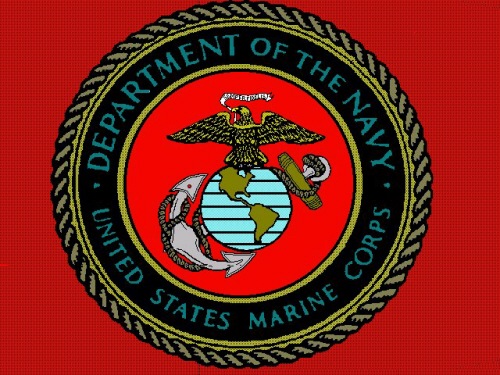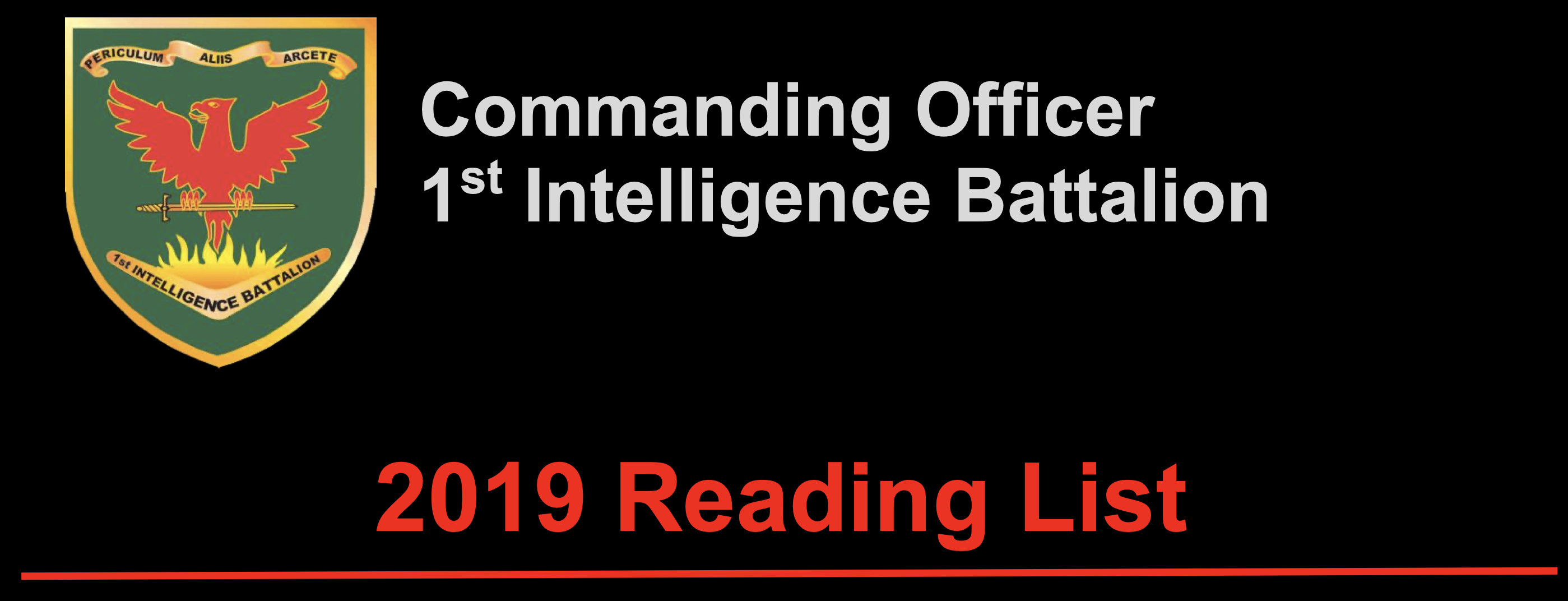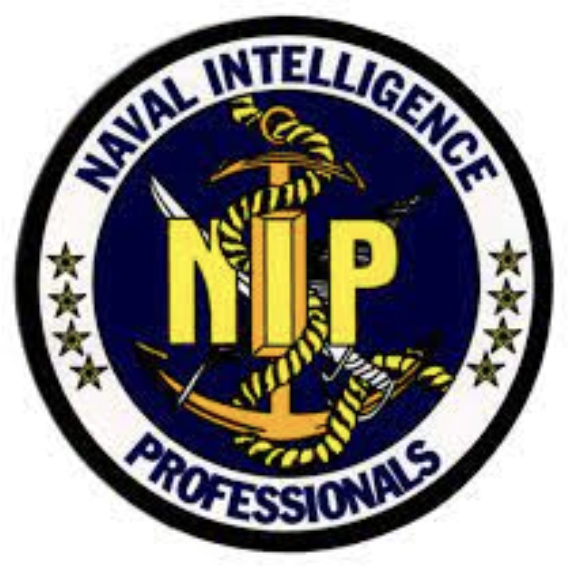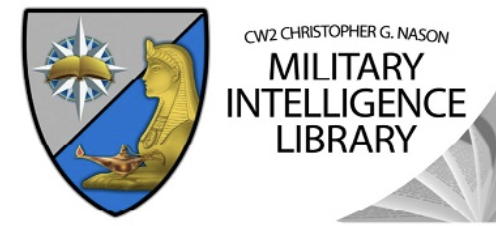Reviews for Spies for Nimitz

Marine Corps Gazette
Since 1916 The Professional Journal of U.S. Marines
Joint Intelligence in World War II
February 2005 Volume 89, Number 2
Reviewed by Ltcol Robert R. Darron, USMC (Ret)
It’s a pity that the title of this book is so misleading. There’s not a classical spy person in the sense of Nathan Hale, Mata Hari, the Rosenbergs, or the Walkers in the entire book. The subtitle is a more accurate description of the content of the work. This book tells the story of the Joint Intelligence Center Pacific Ocean Area (JICPOA) the ancient ancestor of the Joint Intelligence Center, Pacific, an element of the U.S. Pacific Command at Camp H.M. Smith, Hawaii. JICPOA had as its foundation what we would call today the “all—source” intelligence operations in the old 14th Naval District (14th ND) headquarters building at Pearl Harbor and the embryonic intelligence staff of the U.S. Pacific Fleet. Prior to the Japanese attack on Pearl Harbor on 7 December 1941, the combat intelligence section of the 14th ND produced all-source intelligence for the fleet commander. JICPOA, as such, would not be named until the fall of 1943.
The author extensively researched intelligence functioning in the Pacific War, and his footnotes reference many JICPOA (and its immediate forerunners) reports as primary sources. Included as references are the bulletins and other reports on major island objectives, as well as works that most Marines are familiar with, such as Isely and Crowl’s seminal U.S. Marines and Amphibious War. Also referenced are a number of monographs from the Headquarters Marine Corps History and Museums Division.
Moore examines the intelligence workup for several island campaigns, beginning with the Marshalls Operations FLINTLOCK (Kwajalein—Roi—Namur) and CATCHPOLE (Eniwetok—Parry—Engebi). In each case, the author discusses the strategic background for the operations, how intelligence influenced Nimitz’s decision making, the chain of command, the plan of attack in broad terms, and how intelligence, produced mostly by JICPOA, influenced the conduct of operations. He offers conclusions on how each combat operation proceeded and how well the intelligence provided supported the on-scene commanders. Other campaigns examined are the Marianas, Peleliu, Iwo Jima, and Okinawa, concluding with the preparations for the invasions of Kyushu and Honshu in the Japanese home islands.
Finally, Moore addresses the role JICPOA played in the Pacific War, what the organizations influence was on theater operations, and the overall effectiveness of JICPOA. To do this he draws heavily on two reports prepared by senior JICPOA personnel immediately following the end of the war.
While Spies for Nimitz is difficult to read because of Moore’s lack of military experience and fluency in our “language,” the book should be required reading in every intelligence schoolhouse. I also recommend it for students at intermediate and top—level schools as well. To ensure that the valuable lessons in the book are not forgotten by higher level practitioners of the art of intelligence, the book should be on the desk of every principal in our joint intelligence structure. The fact that the book recounts events that took place over 60 years ago is irrelevant.
This review would not be complete without mentioning the Foreword by BGen Michael E. Ennis, the head of Marine Corps intelligence before that position was recently civilianized. These few pages are almost worth the price of the book! BGen Ennis says a lot of right words, including a few about intelligence failures. Not all such failures were properly deemed intelligence failures, but more like the failures of policymakers to take intelligence into account because it didnt track with their ideas or accepted policy.
LtCol Darron has had extensive experience in intelligence both on active duty and in retirement. A frequent contributor to the Gazette, he lives in Romona, CA.
Reprinted by permission of Marine Corps Gazette.

Studies in Intelligence:
Journal of the American Intelligence Professional
Vol.48, No 4, 2004
From the CIA’s Center for the Study of Intelligence
Intelligence in Recent Public Literature
The Intelligence Officer’s Bookshelf
Compiled and Reviewed by Hayden B. Peake
On his way to becoming Director of Central Intelligence, Adm. Roscoe Hillenkoetter served as a naval attache in France, the executive officer of the battleship USS West Virginia at Pearl Harbor, captain of the USS Missouri, and head of the unit that became the Joint Intelligence Center Pacific Ocean Areas (JICPOA). This relatively little known center provided Adm. Chester Nimitz, Pacific Fleet Commander-in-Chief, the intelligence necessary for the naval and marine island-hopping campaigns in the northwestern Pacific during World War II. Although mentioned briefly in other studies of naval intelligence, Spies for Nimitz is the first full examination of how this group of all-source analysts functioned and contributed to the war.
Military scholar Jeffrey Moore discovered that, unlike many other service units, JICPOA was closed down before a summary after-action report was written. His book, based mainly on primary sources, corrects that omission. It is not just a descriptive history; Moore has evaluated the sources, the quality of intelligence that JICPOA produced, terrain, aerial, and cryptographic data, interrogation reports, and order of battle and the importance of the intelligence to the outcome for each of the major Pacific battles.
Moore’s research shows a mix of successes and mishaps. Overall, JICPOA produced the accurate order of battle absolutely essential to successful invasion planning. And in the Guam campaign, JICPOA aerial reconnaissance pinpointed defenses and troop dispositions. Prior to the invasion of Saipan, however, “sufficient geographic intelligence necessary for effective campaign planning and execution” was lacking. And then there was the irony of Iwo Jima and Okinawa: Well before these battles, a captured document revealed a change in Japanese defensive tactics called fukkaku (a camouflaged fight-to-the-death, defense—in—depth approach). But the document was not translated until near the end of the war. Unaware of the new tactics, the Marines suffered heavy losses taking the islands.
Although most of the book examines the application of intelligence to the various battles, Moore also discusses how the five—step navy intelligence cycle—planning and direction, collection, processing, production, and dissemination was applied by JICPOA during World War II. In the end, he concludes that the lessons learned from the JICPOA experience are applicable to those engaged in joint intelligence operations today. Although Spies for Nimitz is not a how—to—do—it book, it does tell what has to be done and how important the result is to successful operations. A valuable and very interesting book.

Association of Former Intelligence Officers
Weekly Intelligence Notes
#05-04, 24 February 2004
Moore provides examples of intelligence successes, failure, and inadequacies, showing that the events of nearly sixty years ago provides lessons equally valid today. But have we learned these lessons? Moore profiles the history and operations of America’s first effective, all-source, joint military intelligence agency known as JICPOA [Joint Intelligence Center, Pacific Ocean Areas]. JICPOA is credited with providing Adm. Nimitz with intelligence needed to win the Pacific War. He shreds out differences between faulty versus effective intelligence and the integration of intelligence and operational plans— pertinent to today’s military ops against terrorism. “We will never learn the right lessons and take the appropriate corrective measures if our default reaction is simply to cry intelligence failure.”—BG Michael Ennis, USMC
Reprinted by permission of the Association of Former Intelligence Officers.

Naval War College Review, 58.4, Autumn 2005:153-55
Autumn 2005
Naval Postgraduate School
Reviewed by James J. Wirtz
Despite its title, this book is not about spies but about what is referred to in today’s parlance as “intelligence preparation of the battlefield”: a sustained process of research and analysis, based on all source collection efforts, that identifies important aspects of potential combat environments. Intelligence preparation of the battlefield provides planners and commanders with “combat intelligence” about the terrain, weather conditions, enemy order of battle and dispositions needed to conduct an upcoming operation. For instance, without knowledge of tidal conditions, currents, the composition and slope of a beach, or the location of underwater obstructions and mines, amphibious operations can be doomed to failure before they begin.
In this history of the performance of U.S. intelligence in the Pacific during World War II, Jeffrey Moore links the intelligence provided to planners by the Joint Intelligence Center Pacific Ocean Area (JICPOA) to the outcome of the major amphibious assaults against Japanese-occupied islands. Intelligence preparation of the battlefield, always important, was of great strategic significance in the “island hopping” campaign undertaken by the United States. Planners had to identify atolls or islets that were lightly defended by the Japanese yet possessed the anchorages, landing strips, and flat terrain that made them suitable as operating bases for the next stage in the campaign. When intelligence analysts provided accurate pictures of the battlefield, operations generally went smoothly and U.S. casualties were light. When they underestimated enemy strength, failed to warn the assault of strange topographic conditions, or failed to anticipate shifts in enemy strategy, the outcome was a grinding attritional battle that generated high losses.
American intelligence analysts and planners knew very little about the Marshall, Mariana, or Caroline Islands. Of course, many of the atolls and islets targeted in the American march across the Pacific were extraordinarily isolated and had been inhabited mostly by Polynesians before the war. More surprisingly, planners also knew little about American islands that had been seized by the Japanese in the immediate aftermath of Pearl Harbor. Guamanians who had left their home island when the Japanese invaded had to be consulted about topography, road networks, and tidal conditions to support plans for the assault on Guam. The U.S. Navy had supposedly been planning operations against Japan for years; it is hard to explain why so little effort had been made to gather basic information about the Pacific islands.
In assessing JICPOA’s performance, Moore identifies a perplexing trend—that U.S. intelligence actually deteriorated as the war progressed. Intelligence performed relatively well against early targets (Kwajalein, Eniwetok, Tinian, and Guam), probably because these atolls were lightly defended by the Japanese and relatively few fortifications had to be identified in the planning of shore bombardment. At the start of the war, the Japanese mostly constructed beach defenses, which were easy to spot by submarine and aerial reconnaissance. There were also some early successes in the exploitation of Japanese material and personnel. Documents that were left behind in Guam by the Japanese Thirty—first Army headquarters were a windfall of information about Japanese defenses across the Pacific. JICPOA, however, lacked the translators and analysts needed to go through these materials quickly, a phenomenon that is referred to today as “information overload.” The tempo of the campaign was so fast, and intelligence analysis so slow, that important information often reached commanders after a battle was already joined, by which time information could yield only diminishing returns.
Worse, as the war progressed, the Japanese constructed increasingly sophisticated and well camouflaged fortifications in depth, and the time available for U.S. analysts to survey and identify island defenses decreased. Operations were executed in rapid succession, and JICPOA could no longer keep pace. Intelligence estimates decreased in quantity and accuracy just as Japanese defenses were increasing in strength and lethality. The attitudes of senior U.S. officers also changed, as American materiel superiority began to take its toll on the Japanese. Intelligence preparation of the battlefield took a backseat to maintaining the momentum of the drive across the Pacific. Commanders were more interested in bringing the overwhelming weight of U.S. naval, Marine, and army units quickly to bear against the Japanese so that the ghastly attritional campaign might end as soon as possible. As Moore notes, the island campaigns were brought to an end not by brilliant maneuver but by the virtual annihilation of Japanese garrisons.
Moore looks on the bright side of JICPOA’s modest performance, but he finds only one outstanding success by its analysts during the war. Ironically, it was in support of an amphibious operation that never occurred, the planned invasion of Kyushu in the autumn of 1945. Because Japanese garrisons usually fought to the death and inflicted high casualties on attacking forces, the five hundred thousand defenders of Kyushu were capable of turning the opening phase of the attack on the home islands into a bloodbath. JICPOA’s accurate estimates of the steady buildup of Japanese forces on the island led military planners to support a less costly way to end the war in the Pacific—the use of the atomic bomb against Hiroshima and Nagasaki in August 1945.
Reprinted by permission of the Naval War College.
The NYMAS Review of Military Literature
No. 30 Spring 2004
A Publication of the New York Military Affairs Symposium
An analytical account of the organization and operations of the JICPOA (Joint Intelligence Center Pacific Ocean Areas) from its establishment in mid -1943 through to the end of the war. The work opens with some background on the craft of intelligence, including the importance of skill, luck, knowledge, and personalities on the production of actionable intelligence. There is also an overview of intelligence operations in the Pacific prior to the establishment of JICPOA, including Pearl Harbor, Midway, and Guadalcanal. The author then proceeds to look at how intelligence influenced Nimitz campaigns from the Marshall Islands to the end of the war, including a chapter on intelligence operations in support of planning for the prospective invasion of Japan. The chapters are analytic and critical, evaluating the value of the intelligence supplied and effectiveness with which it was used. An important book for students of the Pacific War, intelligence, and jointness.
The Washington Times
“Soviet Collaborator, Intelligence in Pacific”
Published May 9, 2004
By Joseph C. Goulden
Understandably, many of the intelligence books on the Pacific phase of World War II have concentrated on signals intelligence the code-breakers who tracked the Japanese fleet over waters covering almost half the world. Now comes a look at the intelligence behind the “island hopping” phase of the campaign in Jeffrey M. Moore’s, Spies for Nimitz: Joint Military Intelligence in the Pacific War (Naval Institute Press, $29.95, 336 pages, illus.).
Planners of the island campaign—by war’s end, there had been eight fiercely contested beach landings—realized early on their ignorance of the targets. What were beach gradients? How sturdy were Japanese defenses? How about the tides?
Given that amphibious assaults are highly dependent on surprise, Adm. Chester Nimitz knew that answers to these and other questions must be found. So he created an inter—service office, the Joint Intelligence Center, Pacific Ocean Areas (JICPOA), to make up for the lapses.
To me, the fascinating part of Mr. Moore’s book is his comparison of pre—invasion estimates with what actually happened, a rare instance of a report card on intelligence operations. To be sure, there were glitches: For instance, a shift in Japanese tactics from coastline stands to redoubt defenses was detected only after a frightful cost of lives.
But as Mr. Moore writes, “Although severely bloodied at times, the United States never lost a Central Pacific battle, and that was in large part because Nimitz and his lieutenants had either a very good picture of the enemy situation, or a fair picture of it.” The JICPOA experience led ultimately to creation of the Defense Intelligence Agency.
So why have naval historians ignored JICPOA for half a century? Secrecy. JICPOA personnel “were forbidden even to mention the organization’s real name and managed to keep Nimitz’s most secret weapon hidden for the entire war.”
Members of JICPOA wore no insignia to designate their specialty. “As far as Nimitz was concerned,” Mr. Moore writes, “the outside world had no ‘need to know’ about JICPOA’s activities.”
However belatedly, Mr. Moore now gives the men and women of JICPOA their just due, in a well—documented book that should interest both the lay reader and the intelligence professional.
Reprinted by permission of The Washington Times.
Joseph C. Goulden is writing a book on Cold War intelligence. His e-mail is [email protected].

Journal of the Australian Naval Institute
Spring 2004 No 114
Reviewed by Lieutenant Commander Joe Straczek RANR
Spies for Nimitz: Joint Military Intelligence in the Pacific War
Jeffrey M Moore
Naval Institute Press, 2004
Hardcover, xxvii, 300pp
RRP US$29.95
Swift, Silent and Deadly: Marine Amphibious Reconnaissance in the Pacific, 1942-45
Bruce F Myers
Naval Institute Press, 2004
Hardcover, xix, 167pp
RRP US$24.26
Both of these publications deal with intelligence in the Pacific theatre during the Second World War. The title of the first book however is somewhat misleading, for it is not a book about spies. Spies for Nimitz: Joint Military Intelligence in the Pacific War tells the story of the establishment and functioning of the Joint Intelligence Centre Pacific Oceans Area (JICPOA). In particular it examines five Pacific amphibious operations and how intelligence supported and impacted on the planning and conduct of these operations. The five operations were the Marshalls, the Marianas, Peleliu, Iwo Jima and Okinawa. Spies for Nimitz also touches on the planned invasion of Japan, but unfortunately this is a fairly short section.
The subject chosen by Jeffrey Moore is an important one both from an historical and contemporary perspective. Public examinations on the performance of intelligence organisations are by their very nature historical. Governments are loath to expose the inner workings and external sources of their intelligence agencies in anything but a historical context and even then this is done reluctantly.
Prior to the Japanese attack on Pearl Harbour, American intelligence was single service focused and at best dysfunctional. Following the Japanese attack came the realisation that the existing organisations were insufficient to support the planned trans—Pacific amphibious advance. What was needed was an organisation which could collect, interpret and analyse information from all sources: aerial photography, signals intelligence, hydrographic information, topographic information, captured documents, POW interrogations and open sources, and present that information to the operational planners in time for it to be incorporated into the proposed plans. In essence this is what JICPOA did.
In examining the role of JICPOA in the Pacific War, with each campaign the author presents a strategic background to the operation, and then examines the intelligence operation which supported the assault and how the intelligence assisted both the strategic planning of the operation and the actual conduct of the assault. Finally the author draws a number of conclusions about the success or shortcomings of the intelligence provided for these operations. In addition to these case studies the author provides a glimpse of a further operation. This final case study briefly covers the operations associated with the planned invasion of Japan.
The second book, Swift, Silent and Deadly: Marine Amphibious Reconnaissance in the Pacific, 1942-45, deals with a related subject: the collection of beach intelligence in support of amphibious operations. In particular it examines the establishment and development of US Marine reconnaissance units. These units were first formed in December 1941 at Quantico in Virginia. The primary mission of these Marines was to collect intelligence on potential landing sites.
Bruce Myers tells the story of the development of these units, the equipment they used and the various operations undertaken. Not only did they make landings on more than two hundred enemy—held beaches but their superior combat skills and training were also used to take difficult or important positions or conduct independent operations —functions not originally envisaged.
As with Spies for Nimitz, Swift, Silent and Deadly examines a number of amphibious operations. In this the two books complement each other very well. Whilst Spies for Nimitz examines these operations at a strategic level, Swift, Silent and Deadly tends to concentrate on the operations, describing the missions and associated events. In this way readers see not only how the information was collected but also how it was applied.
Jeffrey Moore finished off his study on JICPOA with a number of conclusions. Some of these are blindingly obvious, such as intelligence operations are subject to the hazards of war just as combat operations are. One of the more interesting conclusions is that JICPOA never provided worthless intelligence for any campaign, just insufficient intelligence or half the picture. In part the author appears to be saying that JICPOA was not wrong, but not always right. What is clear however is that JICPOA did perform a valuable function and generally satisfied the demands and expectations of its consumers.
Both books are very readable and well researched. They make an important contribution to the historiography of the Pacific War as they deal with significant subjects not previously covered. Both Spies for Nimitz and Swift, Silent and Deadly will be of interest and use not only to military and intelligence historians but also to contemporary practitioners for their insights into what intelligence can and cant do, for many of the lessons learnt so painfully in the Pacific from 1941 to 1945 are being re-learnt today.
Reprinted by permission of the Journal of the Australian Naval Institute.

Osterreichische Militarische Zeitschrift (OMZ)
Vienna, Austria 2005
Austria’s premier defense magazine
By H. Pleiner
(translated for author, Jan 06)
Pacific Command prior to Japan’s entry into the war in December 1941. Intelligence service activities were actually defaulted to another leadership level in the center of Washington, and only after the attack on Pearl Harbor were the consequences understood and reconnaissance activities intensified. The first decisive successes were seen prior to the Battle of Midway, and with the division of the Pacific Theater of Operations between Admiral Nimitz (Central, West, and South Pacific) and General MacArthur (Southwest Pacific, New Guinea, Philippines), separate intelligence structures emerged for both commanders. Soon it became apparent in the Pacific Command Headquarters that there was a need for comprehensive information at the strategic, operational, and tactical levels that could only be realized through a consolidated office that transcended the individual Services. As a result, in 1943 the Joint Intelligence Center, Pacific Ocean Areas (JICPOA) was created from various existing offices and took up its work on 7 September 1943.
The book is a very sober, but even more impressive description of the founding of the JICPOA, the organization and missions of the individual sections, and finally its activities during the course of the war until August 1945. In the process, the book describes all of the intelligence gathering resources and capabilities, how information was analyzed and bundled together for interpretation, and one can see through the course of individual operations what difference the availability of precise information and supporting documents meant for the conduct of battle and the resulting casualties. The weaknesses of the system are also dealt with, with nothing short of unrelenting candor, (including) the sometimes present prejudices against the intelligence service and the problem of getting current information to the user or users in a timely manner. But the government also caused breakdowns and weaknesses, through the routine recall of trained specialist for other functions, even when they were involved in preparing for or conducting operations.
The work and problems of the JICPOA in the operations and battles on the islands of Kwajalein and Eniwetok, Guam, Saipan and Tinian, Peleliu, Iwo Jima and finally Okinawa are dealt with thoroughly, supplemented by impressive maps; comparisons between the situational picture in JICPOA and the actual situation (on the ground) are also presented. Clear analyses of the effectiveness of intelligence service activities and the manner of translation for the sea and land commanders at all levels follow in every case and collectively provide insight into the style of leadership. The background for success or failure in the individual landing operations and follow-on battles is shown, as well as the precision with which the Pacific Fleet conducted extremely meticulous planning and preparation for months at a time.
This volume represents an indispensable supplement to the available literature about the war between the USA and Japan. However, it also allows for detailed assessments of the substance of the intelligence service itself and encourages, with respect to the consistent utilization of available facts by Admiral Nimitz and his staff, comparisons to how, at the same time, other warring nations dealt with and valued the component “Intelligence”. The book also describes a fundament of the American attitude toward war, and operational leadership in the Second World War, the systematic utilization of available resources, and the alignment of these forces and means in focused use against the decisive areas, positions or, especially in the Pacific, islands!
From the OMZ Web page: “OMZ is a periodical for defense matters, covering reports and analyses in the fields of security policy and military science. MZ is published on a bi-monthly basis in print. Task. The roots of OMZ date back to 1808, when the turmoil caused by the Napoleonic Wars provided an impetus for Austrian national defence to create a scientific journal for defence matters. True to the mission given by its founder, the Austrian archduke Charles, this journal, which now is one of the oldest in the world, publishes reports and analyses in the fields of security policy and military science (http://www.bmlv.gv.at/omz/index.shtml).”
Reprinted by permission of The Osterreichische Militarische Zeitschrift (OMZ).

Reading list, Commanding Officer of the 1st Intelligence Battalion, Australian Army, Colonel Ben Alward, 2019
AMPHIBIOUS OPERATIONS AND INTELLIGENCE
An account of the formation of the modern PACOM JICPAC in World War II. This book shows the problems and advantages in the conduct of intelligence support to maritime and specifically amphibious operations in war. This book is a great read for those involved in amphibious ISR across EW, Aerial ISR, GEOINT, HUMINT and All Source Analysis.

A Recommended Reading List, from Naval Intelligence Professionals Bookshelf
From the website: Led by RADM Tom Brooks (Ret.) and ISCM Dave Mattingly (Ret.), NIP has constructed a list of books (fiction and non-fiction) which are considered to be “classics” in each of the intelligence disciplines. The object is to list two or three of the best books in each discipline, and we anticipate that the list will undoubtedly change over time as the readership suggests books that they consider better than the ones on the current list.
In this book Jeffrey Moore profiles the history and select operations of America’s first effective, all source, joint military intelligence agency. Known as JICPOA for Joint Intelligence Center, Pacific Ocean Areas, the agency’s nearly two thousand specialists are credited with giving Admiral Nimitz the intelligence he needed to win the Pacific War. Moore explains how JICPOA evolved and reveals some new facts about the war as he assesses the impact of intelligence on eight amphibious campaigns in the islands of the Central Pacific. He also demonstrates timeless intelligence lessons, faulty versus effective intelligence techniques, and intelligence-operational planning integration–subjects that continue to be pertinent to today’s military operations, including the war on terror.
https://www.navintpro.org/recommended-reading-list/?tag=WWI%2FWWII%2FCold+War&key=articlestags

CW2 Christopher G. Nason Military Intelligence Library, Professional Development, MI Library Intelligence Recommendations
Foreword by Brig. Gen. Mike Ennis, USMC In this book Jeffrey Moore profiles the history and select operations of America’s first effective, all source, joint military intelligence agency. Known as JICPOA for Joint Intelligence Center, Pacific Ocean Areas, the agency’s nearly two thousand specialists are credited with giving Admiral Nimitz the intelligence he needed to win the Pacific War. Moore explains how JICPOA evolved and reveals some new facts about the war as he assesses the impact of intelligence on eight amphibious campaigns in the islands of the Central Pacific. He also demonstrates timeless intelligence lessons, faulty versus effective intelligence techniques, and intelligence-operational planning integration–subjects that continue to be pertinent to today’s military operations, including the war on terror. For this unprecedented look at the little-known but groundbreaking organization, Moore draws on interviews with key personnel and internal documents. He supports his analysis of JICPOA’s strengths and weaknesses, its successes and failures, with more than forty maps, charts, and illustrations. With a foreword by the head of Marine Corps intelligence, the book makes an excellent addition to World War II history and professional collections. Intelligence experts and operations planners will find its lessons useful and insightful. Readers with an interest in real-life thrillers will find it a fascinating study of basic intelligence work.